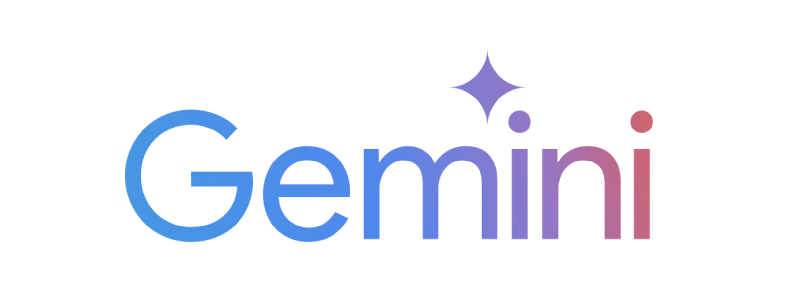When you have a global customer base, resolving complaints in the customer’s native language becomes a basic expectation. According to our research, over 70% of customers expect customer service in their preferred language. The lack of such capability frustrates customers and does not reflect your commitment to providing quality support.
Any company genuinely dedicated to providing excellent customer support must ensure that support is available in the languages their customers are most comfortable with. This approach to assisting in multiple languages is called multilingual customer support.
This post will discuss multilingual customer support, including its benefits and the best ways to set it up.
What is Multilingual Customer Support?
Multilingual customer support refers to a business’s ability to provide customer service across multiple languages as part of the overall customer experience. This approach ensures that companies can offer the same level of support for a diverse clientele, regardless of their location or culture.
In practice, this includes localizing customer support content and providing multilingual support channels, including the website chat app, in-app chat, email support, and others.
Example: For companies like Halfbrick (of Fruit Ninja fame), implementing Helpshift’s multilingual chatbot led to collecting feedback and providing support in over 12 languages. Helpshift’s multilingual chatbot enabled them to scale up their multilingual support and quell high ticket volumes. Their time to first response was slashed by over 40%, enhancing the overall player experience. Helpshift’s impact was not limited to the support team’s efficiency; it also identified nearly 80% of issues that helped improve the game’s quality.
Benefits of multilingual customer support for businesses
While English is the most spoken language in the world, most people prefer to communicate in their native tongue for many reasons, one being that it might better capture the sentiments they want to express. This can be particularly applicable in potentially frustrating scenarios that require the person to reach out to customer support for help.
Here are some benefits of having multilingual customer support.
Increased customer satisfaction
Offering your customer support in the native language translates into a better, more personalized customer experience, which leads to increased customer satisfaction. Our research discovered that within six months of providing native language support, our users increased customer satisfaction scores (CSAT) and decreased customer acquisition costs.
If local users can communicate in their native language, it reduces communication complexity, making it easier for customers to understand and get help from your support.
Increased customer loyalty
An Emplifi survey revealed that over 49% of customers who had been loyal to a brand for 12 months continuously left due to poor customer experience.
This translates to one thing: people become customers for the value of a product but stay for the experience. Currently, customers are spoilt for a choice with various valuable products in the market, but they remain loyal to a brand that understands them and respects their culture and language.
Multilingual customer service helps customers make personal connections with your support agents and brand, which drives brand loyalty.
When customers derive value from positive service experiences, it builds a trusted relationship. This, in turn, drives motivation for repeat purchases.
Better agent-customer communication and faster resolution time
When customers can make inquiries in their native language, they can communicate more effectively. With your support agents equipped with AI-enabled translational tools, they can, too, translate inquiries in their native language and follow up with answers or more detailed questions (in the customer’s native language) to quickly identify the issue. This often reduces misinterpretations lost in translation, allowing agents to provide more relevant responses.
Enabling multilingual support eliminates the native barriers between customer agent and customer, leading to more transparent communication.
Increased market reach
With multilingual support, businesses can gain global accessibility and easily tap into new markets with international customers. It removes pending barriers to create an inclusive experience for everyone, regardless of location or language proficiency. Making customer support accessible to a broader audience means businesses can market to a larger audience and increase their conversion rate.
Better brand image
Businesses that are committed to providing multilingual customer support are inclusive and customer-focused. Their dedication to ensuring that customers worldwide have the best possible experience speaks to their positive brand image, which can help attract new customers.
8 Tips to build multilingual customer support in your business
Ready to provide multilingual support in your organization? Here are the best tips to follow when implementing one.
1) Start by researching your market
Going blind by launching your multilingual customer support without proper market research is a disaster waiting to happen. Without it, you’ll expand your support team too fast, too soon.
You need to investigate who your target users are, which languages they speak, and which languages your competitors support. You can collect this data by examining user data, support tickets, and user feedback about the product. Look for increasing users in a location that suggests the product needs to diversify its language.
Consider answering the questions:
- How many languages would you include?
- Which language should be considered a priority?
Choose the number of languages for your business based on their popularity and users. A good starting number is 2; you can add more languages once you own that.
2) Invest in building a multilingual support team
Define expectations before implementing your multilingual support and create a comprehensive training plan.
Continuously provide training materials and resources in multiple languages to keep the team updated. For instance, managers can coach agents to resolve customer issues, especially after negative on-call experiences. Managers can also monitor agents’ proficiency to assess their performance in responding to tickets opened by multilingual customers.
Businesses can use customer service software like Helpshift to monitor support operations and track performance metrics, tickets, and team activities in real time. It also allows monolingual agents to provide consistent and accurate support across multiple languages and maintain high standards.
By monitoring interactions, managers can see which languages are in high demand and adjust resources accordingly to ensure that customer service levels remain high during peak times or as issues fluctuate.
3) Personalize your customer service for the local market
Offering multilingual support goes beyond speaking the customer’s native language. It involves understanding the customer’s culture, lifestyle, and communication preferences. For example, WhatsApp is widely used in many Middle Eastern countries, making it essential for customer service in these countries.
This knowledge makes it easier to provide better support service and understand customer expectations regarding common issues in a market.
Implementing it may sound overwhelming, but customer support tools like Helpshift integrate multiple communication channels, allowing businesses to adapt to changing customer preferences and new communication channels without compromising service quality.
4) Equip your team with relevant software that offers multilingual support features
Typically, agents use translation tools to manage interactions from various countries. However, as every business intensifies its focus on multilingual customer experience, the need for translating queries at scale and providing empathic responses in the customer’s native language becomes critical. In such a competitive environment, if agents use traditional tools like Google Translate, they may not get accurate translations. Moreover,agents will have to toggle between support and translation platforms to understand inquiries.
AI solutions are transforming this landscape by allowing businesses to address inquiries in languages they are not equipped to handle internally. By integrating AI with multilingual support systems, agents can eliminate the need to switch between tools, get accurate translations, and respond to incoming queries efficiently. Consequently, agents can provide faster responses in the customer’s native language, enhancing overall service quality.
Helpshift, for example, uses proprietary machine translation, Language AI, which has a lower translation error rate than Google Translate and ChatGPT. Language AI is directly embedded within Helpshift and can translate incoming customer queries into the agent’s native language.
Language AI can be custom-trained on-brand terminology across multiple languages. You can also train it to avoid specific words in various languages.
5) Set up self-serve experiences across multiple languages
Businesses can also design self-service experiences in the customer’s native language to help customers find solutions and free up agents’ workload for more complex queries.
You can provide localized versions of your knowledge base articles.
Manually translating and updating each article across various languages using third-party translation tools can be quite resource-intensive. It not only consumes a significant amount of time but also incurs considerable expenses.
The Helpshift Help Center is equipped with a built-in machine translation feature, Language AI, that enables you to translate articles into multiple languages effortlessly with just a single click.
You can also implement solutions like Helpshift’s Quick Search Bot (QSB). The QSB is an AI bot that understands the intent behind the user’s message and provides up to 3 relevant FAQs in the customer’s native language. The QSB can deflect 95% of queries and escalate the rest to a human agent.
6) Setup analytics to track multilingual support
Continuously collect, analyze, and interpret data on multilingual support activities to identify trends and patterns in customer interactions. Define the goal for data collection to understand what data you need to collect and the best source for collection.
Helpshift offers integrated reporting tools within the platform, providing real-time analytics, insights, and customizable reports. Managers can monitor support operations on the analytics dashboard, from chatbot performance to agent productivity. They can also evaluate team performance and get real-time insights into queue and team performance to monitor open issues, track agent availability, and optimize resource allocation accordingly.
With Helpshift’s Power BI integration, you can also create customizable reports to analyze data and identify trends and patterns in customer interactions. Track conversational metrics like Time to Resolve (TTR), Time to First Response (TTFR), FAQ views, search, engagement, and Chatbot metrics.
7) Provide multiple channels for your multilingual support
When offering multilingual support, it’s best to adopt an omnichannel approach to capture the various channels customers use in different regions. In the United States, for example, live chat is dominant, while in China, indigenously developed tools are prevalent
From your market research, you should know who your customers are and the channels they use during their customer journey. Then, use an omnichannel tool like Helpshift to connect these channels so customers can reach you from anywhere, and you’ll be available to respond promptly.
Helpshift takes an asynchronous communication messaging approach, connecting today’s messaging apps like Facebook, Discord, WhatsApp, etc., to sync customer conversations so they can easily switch between channels. It integrates multiple channels driven by messaging, AI and bots, so agents can quickly view customer conversation history and pick up the conversations from where they left off without repeating the same information.
8) Deploy an Al-enhanced dashboard for agents to centralize and translate multilingual customer queries
Agents must have a unified portal to collaborate and manage incoming tickets and customer interactions. As customer tickets come in, agents should be able to translate messages within their workspace, instead of running back and forth between the translation tool and the support platform.
Solutions like Helpshift’s AI-enhanced agent workspace can help. Within an unified workspace agents can translate their queries into their native language, and reply to queries in the customer’s native language as well. Unlike tools like Google Translate, which lack custom engines to understand context or brand-specific terminology, Helpshift’s AI can be trained to understand brand terminology when translating customer inquiries and replies.
Important channels to provide multilingual customer support
Help Center
Many customers now prefer to use self-service instead of waiting for a representative. This is why businesses must provide help centers with resources where multilingual customers can search for and find solutions to any issues they face.
Help centers serve as a centralized repository where resources are stored and accessed. This could be an in-app resource center, knowledgebase, or FAQ, which enables customers to troubleshoot issues, find answers, tutorials, and learn more about the product in different languages.
Email and ticketing systems
Email is a primary channel for marketing, news sharing, and support. As a multilingual support channel, customers can send emails and hope to get a response in their native language, which is where Helpshift comes in.
Helpshift’s Language AI can translate customer messages across all popular languages, making it the perfect tool for assisting agents in providing multilingual customer support.
Agents can also respond to customer emails using pre-written responses and templates in multiple languages. This allows agents to respond faster with professionally translated messages and maintain brand consistency and quality in communication.
Social media Platforms
As customers increasingly use social media to connect, share, and engage with brands, providing support in their native languages can significantly enhance the customer experience.
This approach not only meets customers where they are but also respects their language preferences, which is vital for building trust and loyalty. 1 in 5 Gen Z, Millennials, and Gen X say social media DMs are their preferred channel to get customer service from a company.
Optimize your social media channels to double as an additional support channel for receiving and addressing customer complaints.
A well-trained team that is able to leverage technologies like Helpshift’s Language AI can manage these interactions maintain consistency and quality in communication across different languages.
Conclusion
Multilingual customer support can make all the difference in providing exceptional service to a diverse customer base. Use solutions like Helpshift to integrate multilingual support into your customer service operations. Sign up today and start delighting your customers in their preferred language.
Check How Helpshift’s Multilingual Support Feature helped Huuge Games:








